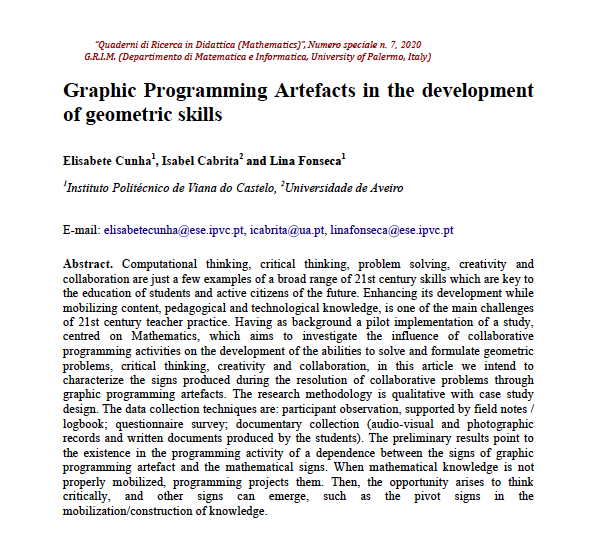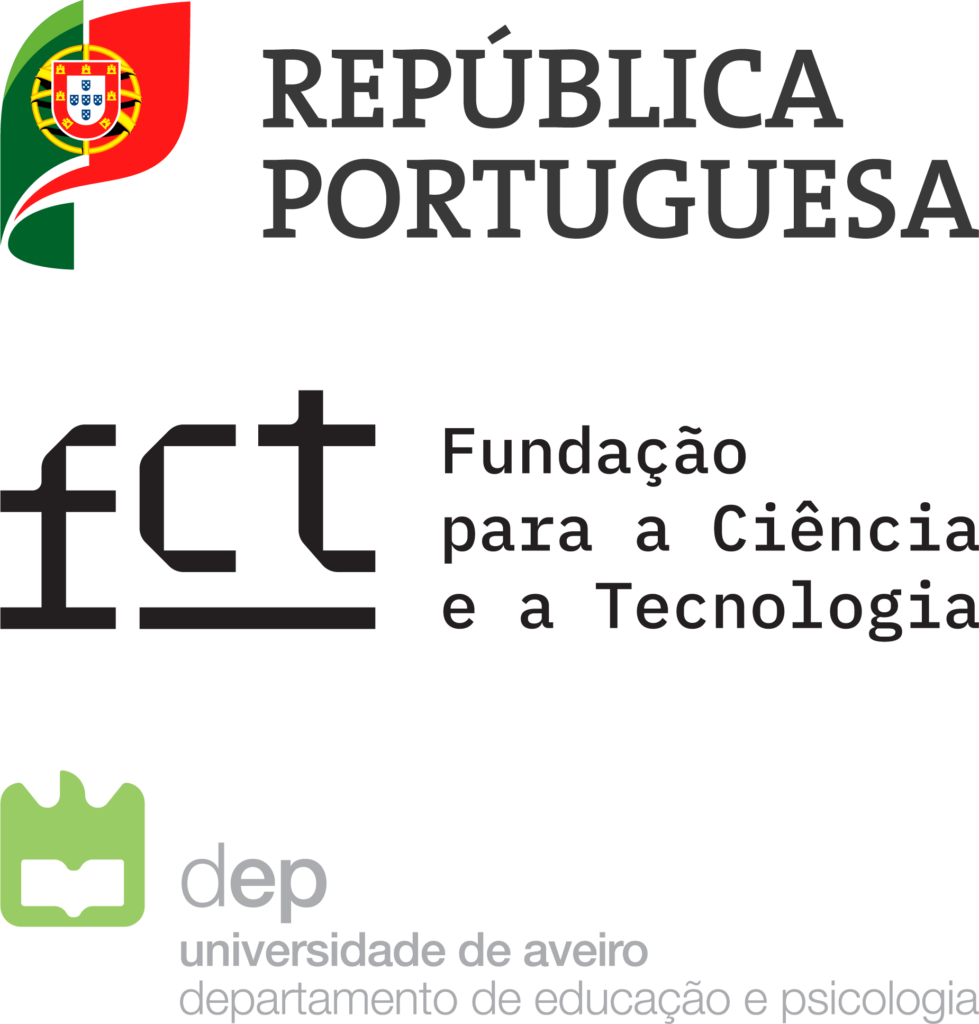Elisabete Cunha, Isabel Cabrita (CIDTFF) & Lina Fonseca | Quaderni di Ricerca in Didattica / Mathematics (QRDM), 7, pp.393-401
Abstract:
Computational thinking, critical thinking, problem solving, creativity and collaboration are just a few examples of a broad range of 21st century skills which are key to the education of students and active citizens of the future. Enhancing its development while mobilizing content, pedagogical and technological knowledge, is one of the main challenges of 21st century teacher practice. Having as background a pilot implementation of a study, centred on Mathematics, which aims to investigate the influence of collaborative programming activities on the development of the abilities to solve and formulate geometric problems, critical thinking, creativity and collaboration, in this article we intend to characterize the signs produced during the resolution of collaborative problems through graphic programming artefacts. The research methodology is qualitative with case study design. The data collection techniques are: participant observation, supported by field notes / logbook; questionnaire survey; documentary collection (audio-visual and photographic records and written documents produced by the students). The preliminary results point to the existence in the programming activity of a dependence between the signs of graphic programming artefact and the mathematical signs. When mathematical knowledge is not properly mobilized, programming projects them. Then, the opportunity arises to think critically, and other signs can emerge, such as the pivot signs in the mobilization/construction of knowledge.
– – – – –
Referência:
Cunha, E., Cabrita, I. & Fonseca, L. (2020). Graphic Programming Artefacts in the development of geometric skills. In Quaderni di Ricerca in Didattica / Mathematics (QRDM), 7, special issue, 393-401. ISSN: 1592-4424. http://math.unipa.it/~grim/quaderno_2020_numspec_7.htm





